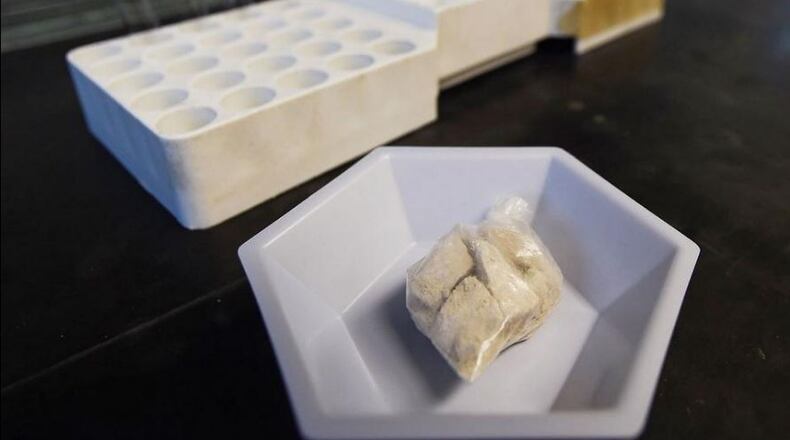RELATED: Ohio gets $26 million to fight opioids
The county has one of worst rates of accidental drug overdose death per capita in Ohio with 349 deaths in 2016 and at least that many already in 2017.
Montgomery County Alcohol, Drug & Mental Health Services requested a total of $2.7 million.
RELATED: Solutions sought to curb opioid epidemic
- $170,000 will be used to expand an existing outpatient detox program where addicts can walk in with no wait. ADAMHS continues to fund 50 percent of this program which operates at Samaritan Behavioral Health on Edwin C. Moses Blvd. and will now expand intake hours from Monday through Friday to 24/7. The program has already helped more than 300 people move into treatment, since it began last September, Long said. "I'd designed for people who have demands on their life," she said, such as raising children or maintaining employment. Entering residential treatment would be disruptive so this provides an outpatient alternative where they can come to an appointment each day for 10 days to detox and develop a longer term recovery plan.
- $500,000 will create a community-based addiction treatment team that will serve individuals in their homes as another alternative to residential or inpatient treatment options. The idea behind the new team is to help people where they are, said Jodi Long, director of treatment and supportive services for Montgomery County ADAMHS. This could include those who have trouble getting transportation to treatment. The model is one that has been used in treating severe, persistent mental illness, where a team including a case manager, doctor, nurse, and therapist go to patients' homes. It was the number one priority on the county's list of requests because patients are more likely to stick with the program than if they have to travel to various appointments. "It really does enhance people engaging with treatment and staying engaged long-term," Long said.
RELATED: County surpasses 2016 fatal overdose total before June
County officials said some of the local projects that didn’t get money are being funded at the state level instead. That includes several education campaigns for both the public and opioid prescribers as well as funding the expansion of the PAX Good Behavior Game in schools.
MORE COVERAGE OF OPIOID CRISIS:
Ohio Lt. Gov. Mary Taylor opens up about her sons’ opioid addictions
How Mexican drug cartels move heroin to Ohio streets
Ohio sets new 1-week limit for pain killer prescriptions
About the Author
